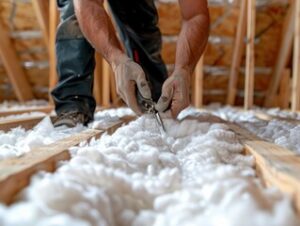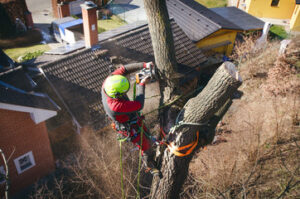Insulation Perth helps to decrease the transfer of heat, thus saving energy and lowering heating and cooling costs. Insulation works by providing resistance to heat flow via conduction, convection, and radiation.

The types of insulation used are fiberglass batts, cellulose, mineral wool (rock and slag wool), and blown in open or closed cell foam. Rigid foam board insulation is made of polystyrene, polyisocyanurate and/or phenolic boards.
A well-insulated home requires less energy to heat and cool. In fact, insulation is one of the most cost-effective energy efficiency upgrades a homeowner can make. Energy savings from reduced heating and cooling costs easily offset the initial investment. A properly installed and maintained insulation system will continue to work for a long time, offering ongoing savings.
Insulation slows the transfer of heat by blocking air from moving through gaps and holes in a home’s envelope, which includes the attic, walls, crawl space, basement and roof. Air leakage in a typical home wastes about 15% of its energy. That wasted energy adds up to a big chunk of the average utility bill. An insulated home is also more comfortable and helps to reduce drafts.
There are many different types of insulation available, each with its own unique R-value (the higher the R-value, the greater the insulating value). Some common materials include fiberglass and cellulose, which is made from recycled paper products. Fiberglass comes in batts or rolls and is best used for sidewalls, attics, crawl spaces and cathedral ceilings. It is blown in using an air compressor and is relatively inexpensive. However, it is prone to moisture damage and exterior deterioration over time. Cellulose is a green product with high recycled content and low VOCs (volatile organic compounds). It packs tightly into building cavities and has a lower R-value but is more resistant to moisture damage and deterioration.
Structural insulated panels are a more expensive option for new construction homes. They are prefabricated insulated structural elements that replace stud and stick frame framing. They can deliver energy savings of up to 12% to 14% and contribute to a tighter-fitting, more energy-efficient house.
In addition to the energy benefits of a well-insulated home, it can also help save money for the environment. By reducing the amount of fossil fuels consumed for home heating, insulation helps to cut demand on power plants and reduce greenhouse gas emissions.
A professional can conduct an energy audit to determine how much energy your home is wasting and what the best options are for upgrading it with insulation. This audit will determine the type and R-value of existing insulation in your home, as well as the condition of the current installation. It will also identify any areas where air leaks through your home’s envelope and recommend a course of action for addressing them.
Cost Savings
Insulation can reduce energy costs in your home by preventing unwanted heat transfer, keeping temperatures more even throughout the house and reducing costly air conditioning and heating use. Without proper insulation, it’s not uncommon for homes to lose up to 15% of their cooling and heating energy.* Insulation also helps cut down on noise and reduces the need for high-energy equipment like ceiling fans and air conditioning units.
It’s important to remember that the cost of installing the right insulation can often be paid for in less than a year in reduced energy bills. This is especially true for older homes that have inadequate insulation.
A good starting point is to insulate the attic and outer walls as these areas experience the most heat transfer. Adding insulation to the water heater, furnace and air vents is another way to save money on your energy bills.
The type of insulation you choose depends on your climate. Fiberglass is a common, inexpensive choice that is effective in most climates. It’s available in batt, roll and loose-fill forms. It’s typically installed in sidewalls, attics and crawl spaces but can also be used in ceilings.
Mineral wool and cellulose are both eco-friendly and natural products that insulate very well. Rigid foam board insulation, which can be made from recycled materials as well, is a good option for colder climates because of its high r-value. It’s also very durable and can be used on the exterior of your home to protect it from moisture damage and make for a more quiet living space.
Foam insulation is also an ideal choice for walls because it doesn’t allow moisture to penetrate and cause problems. Structural insulated panels (SIPs), which are prefabricated insulated structural elements for use in building walls, floors and roofs, can help you build an efficient home that will help save on your energy bills.
A professional can help you choose the right insulation for your home and install it properly. If you’re considering DIY installation, it’s recommended to follow the manufacturer’s instructions and safety precautions carefully. This will help ensure that your project is done correctly and safely, preventing the potential for mold and moisture damage to the structure of your home or health issues.
Reduced Moisture
Insulation helps control moisture in buildings, making them healthier and more comfortable for occupants. When properly installed and maintained, insulation protects against mold and other harmful contaminants, which thrive in damp and humid environments. It also prevents condensation and the resulting damage to building materials such as wood, drywall and metal.
Moisture control is important because it helps prolong the lifespan of a building’s components and enhances a structure’s energy efficiency and durability. Wet insulation loses its effective insulating properties, and it can create an environment that promotes the growth of harmful mold and mildew.
A common cause of moisture problems is condensation, which occurs when cold outdoor air comes in contact with warmer indoor surfaces like walls and ceilings. Insulation can reduce this issue by creating a barrier between the cold exterior and warm interior. Insulation is often designed with vapor barriers, which are installed on the warm side of the insulation and help keep moisture from transferring to the indoor surface.
Insulation is also helpful in regulating the temperature of air that comes in contact with surfaces inside the home or building. When air is cooler than its dew point, it can’t hold water vapor and will condense on the first cold surface it comes into contact with. Insulation can significantly reduce this problem, helping homeowners and building owners avoid costly moisture-related damages.
The best type of insulation for moisture control varies according to climate and humidity levels, as well as the size and condition of a home or building. Cellulose and spray foam insulation are typically treated with borate or other chemicals during the manufacturing process, which further enhances their moisture management capabilities. Proper installation techniques, such as dense packing and ensuring the sealing of joints and seams, also play an important role in moisture control.
A reputable insulation contractor can help identify any potential issues and make recommendations to ensure your building’s insulation is performing correctly. Signs to look for include high energy bills and unexplained drafts that indicate poor insulation or moisture problems. A consultation with a professional can also help you choose the right type of insulation for your specific needs and climate.
Reduced Noise
Insulation can reduce the amount of noise that travels between rooms, floors and walls. It can also prevent the spread of outdoor noise, like traffic or the sounds from your neighbors’ homes. The type of insulation you choose will depend on your needs, with fiberglass and cellulose being the best options for sound reduction.
The density of the insulation material and its placement will determine how effective it is at reducing noise. Fiberglass and cellulose both absorb and block sound waves, reducing the level of vibrations that can pass from one area to another. Both solutions work to reduce airborne noise, which includes music, conversations and other sounds from inside your home, as well as outside traffic and other outdoor sounds. They can also help to reduce impact noise, which includes footsteps and the vibrations of large appliances like your washer and dryer.
In addition to absorbing and blocking sound, some insulation solutions have a reflective coating that helps to keep noise from passing through the space. This is ideal for attics, where it can help to reduce aircraft noise, car or street noise, and other unwanted outdoor noises from disrupting your home’s comfort.
Many different types of insulation are available, and each has its own unique benefits. Insulation can also be installed in a variety of ways, depending on your needs. Fiberglass and mineral wool insulation are often used in batt form, where it is fitted between studs, joists or beams, while blown-in insulation, such as cellulose and foam, can be used in attics, walls, or floors.
Insulation can help to reduce your energy costs, increase the comfort of your home, and create a healthier environment for you and your family. It can also help to reduce your carbon footprint, which is important for the health of our planet. The good news is that you don’t have to make any major changes to your home in order to reap the benefits of insulation. Contact the insulation experts today to see how we can help you reduce your energy costs and create a quieter living space.








